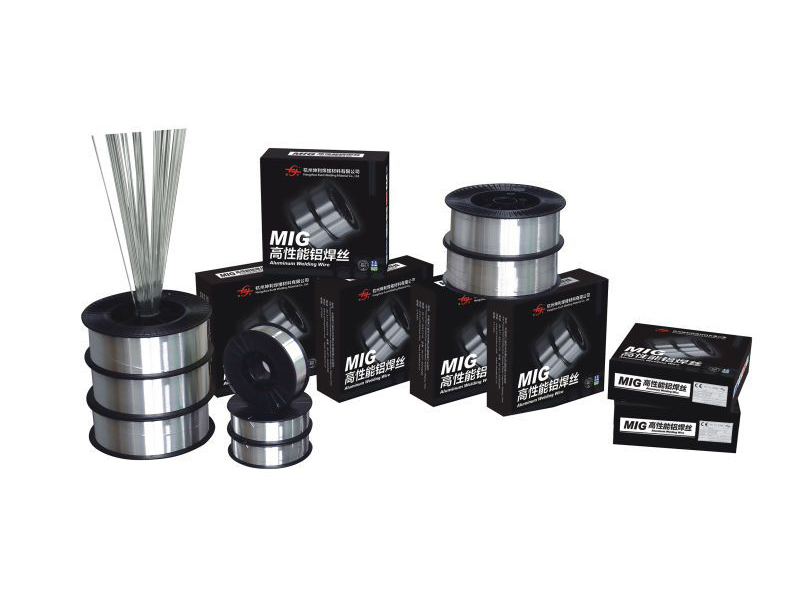ER1100 Aluminum Welding Wire: A Guide to Specifications, Properties, and Automotive Applications
Aluminum welding requires the right filler metal to ensure strong, corrosion-resistant joints. ER1100 aluminum welding wire is a popular choice for welding pure aluminum (99% Al) due to its excellent conductivity, corrosion resistance, and workability.
ER1100 Aluminum Welding Wire Specifications and Properties
Chemical Composition
ER1100 is made of 99% pure aluminum, with minimal alloying elements, making it ideal for welding similar base metals. Its typical composition includes:
Aluminum (Al): 99.00% min
Iron (Fe): 0.40% max
Silicon (Si): 0.30% max
Copper (Cu): 0.05% max
Manganese (Mn): 0.05% max
Zinc (Zn): 0.05% max
Mechanical Properties
Tensile Strength: 50-70 MPa (7,000-10,000 psi)
Yield Strength: 15-30 MPa (2,000-4,500 psi)
Elongation: 35-45%
Melting Point: ~660°C (1220°F)
Key Characteristics
High electrical & thermal conductivity – Ideal for heat exchangers and electrical components.
Excellent corrosion resistance – Suitable for marine and chemical environments.
Soft & ductile – Easy to work with but requires proper technique to avoid burn-through.
Non-heat-treatable – Does not gain strength through heat treatment.
Recommended Welding Processes
Gas Metal Arc Welding (GMAW/MIG) – Most common method.
Gas Tungsten Arc Welding (GTAW/TIG) – For precision welding.
Oxy-Acetylene Welding – Less common but usable.
ER1100 Aluminum Welding Wire for Automotive Repairs
Why Use ER1100 in Automotive Applications?
ER1100 is often used in auto body repairs, radiator fixes, and aluminum panel welding because:
Matches pure aluminum parts (e.g., non-structural panels, trim, and some older car bodies).
Prevents galvanic corrosion when welding pure aluminum components.
Provides smooth, clean welds with minimal spatter.
Common Automotive Uses
Radiator & heat exchanger repairs
Aluminum body panel restoration (e.g., classic cars with pure aluminum bodies)
Fuel tank & exhaust system patches (where compatible)
Custom fabrication of aluminum trim & brackets
Welding Tips for Automotive Work
Use 100% argon shielding gas for clean welds.
Pre-clean surfaces thoroughly (remove oil, oxide layers).
Control heat input – Aluminum dissipates heat quickly, but ER1100 is prone to burn-through.
Use a push technique (MIG) for better penetration and bead appearance.
NEXT:Versatile and Reliable: Why ER4043 Aluminum Welding Wire Remains a Welder's Go-To Choice
Related Products
-
 View More
View More
5154 Aluminum Alloy Welding Wire
-
 View More
View More
ER4043 Silicon Aluminum Welding Wire
-
 View More
View More
ER4047 Aluminum Mig Welding Wire
-
 View More
View More
ER5154 Al-Mg Alloy Wire
-
 View More
View More
ER5087 Magnesium Aluminum Welding Wire
-
 View More
View More
Aluminum Welding Wire ER5183
-
 View More
View More
ER5356 Aluminum Welding Wire
-
 View More
View More
ER5554 Aluminum Welding Wire
-
 View More
View More
ER5556 Aluminum Welding Wire
-
 View More
View More
ER1100 Aluminum Welding Wire
-
 View More
View More
ER5754 Aluminum Welding Wire
-
 View More
View More
ER2319 Aluminum Welding Wire
 English
English Deutsch
Deutsch
 English
English Deutsch
Deutsch


